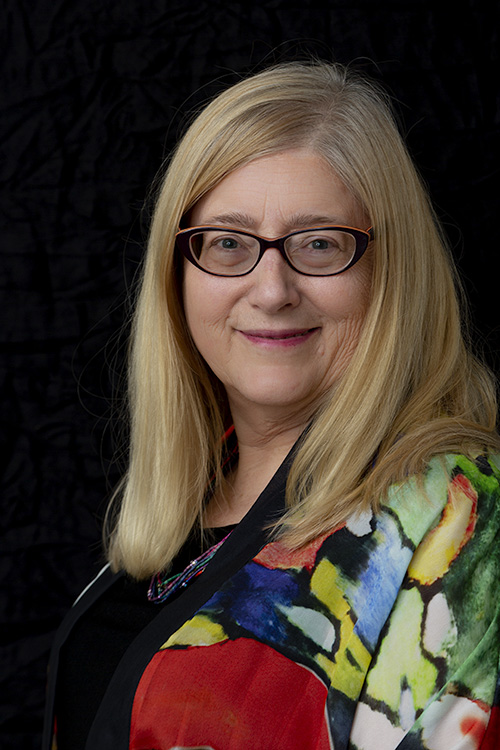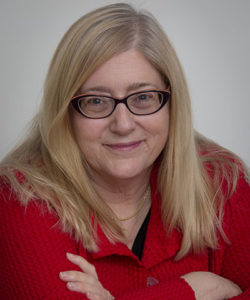4 Ways You Can Be Fit Old and Fat
My friend Nancy is in her eighties and obsessed with her weight. A small woman, Nancy is intent on becoming even smaller. She meets with a nutritionist and restricts her calorie intake, believing that this will improve her health and prolong her life. At lunch she judges her own food choices and what others are eating. Although she is ambulatory, Nancy moves very little. The idea of lifting weights to strengthen her bones and muscles is completely foreign. Yet the research shows that growing stronger, not smaller, is the best thing we can do for our health as we age.
We are bombarded with messages that growing old is a terrible fate, and that body fat is harmful and shameful. Like ageism, weight bias is a pervasive part of our culture that many accept without question. In their 2022 study, Moving Toward Antibigotry, the Center for Antiracist Research at Boston University identified ageism and anti-fat bigotry as the two forms of bias with the lowest recognition in the United States. Thus it can seem perfectly natural to judge ourselves and others harshly based on age or body size. Organizations such as the National Association to Advance Fat Acceptance (NAAFA) and AARP push back on these biases, yet they remain pervasive even among research scientists. Anti-fat bias generated a “firestorm” when one veteran researcher published her findings.
Katherine Flegal was a senior scientist at the CDC in the early 2000s when she and her team conducted a study to estimate deaths associated with underweight (body mass index [BMI] <18.5), overweight (BMI 25 to <30), and obesity (BMI ≥30) in the United States. Dr. Flegal was known as an experienced and meticulous researcher, and her previous articles were highly regarded. But her 2005 study, published in the Journal of the American Medical Association, received a far different reception.
Flegal’s team found that fewer than 5% of deaths were associated with obesity (as opposed to the 15% claimed in a highly publicized CDC study chaired by Dr. Ali Mokdad). The Flegal study found that underweight was also associated with excess deaths. On the other hand, Flegal’s study found a slight decrease in deaths associated with overweight. Picture a U-shaped curve with mortality at its lowest for overweight individuals and higher on either side, for both underweight and obese persons. A month after Flegal’s JAMA article was published, the CDC evaluated the Flegal and Mokdad studies and determined that Flegal’s findings were a better estimate.
Within hours of publication in JAMA, Dr. Flegal was fielding calls from journalists who had already been contacted by a faculty member at the Harvard School of Public Health complaining about her findings. Thus began years of ad hominum attacks, phone calls to Flegal’s superiors, and inaccurate claims. For example, a post doc at Harvard published an article stating that Flegal had been demoted at CDC as a result of the study (in fact, Flegal’s JAMA article earned her the Shepherd Award, CDC’s highest honor for scholarly work).
Fast forward to 2014, when cardiologist Carl Lavie published The Obesity Paradox, a book that documents the protective effects of overweight for older persons. Dr. Levie is one of many researchers who have found that overweight after 60 is associated with a lower risk of kidney failure, stroke, coronary artery disease, and other conditions. In addition, Dr. Lavie’s book documents that overweight persons live longer and fare better than “normal” weight persons after being diagnosed with conditions including heart failure, cancer, kidney disease, arthritis and AIDS.
Given prevailing assumptions about fat and health, it is not surprising that these findings were called “paradoxical.” But Dr. Flegal, who retired from CDC and is now a professor at Stanford University, takes issue with that term. Labeling certain data paradoxical stigmatizes the data and enshrines bias. The scientific method requires researchers to base findings on data, not to judge data based on confirmation bias. Indeed, considering the U-shaped curve of mortality data, why call the weight segment associated with the lowest mortality “overweight?”
But science and medicine are conducted by human beings with inherent biases. To advocate an unbiased look at weight and health, including weight as we age, is an uphill battle. As with Dr. Flegal’s findings, the “obesity paradox” has been subject to intense negative pushback from other researchers. Carl Lavie wrote: “I suddenly found myself swimming upstream against a tidal wave of ingrained ideology.” And in addition to scientific bias, there are financial incentives from the diet industry. A literature review in the journal Nature found that 67% of articles on weight loss were funded by the diet industry, and that those articles claimed much higher success rates than articles funded by non-industry sources.
When research translates into clinical practice, more problems emerge. When physicians use Body Mass Index (BMI) as a basis for recommending weight loss, they employ a metric that has been called “lying by scientific authority.” BMI, which is a person’s weight divided by the square of their height, was developed by Adolphe Quetelet, a nineteenth century mathematician, to study population trends. Quetelet warned that BMI should not be used to estimate fat in an individual. And with good reason: BMI makes no allowance for body composition. As Dr. Levie writes: “Bone is denser than muscle and twice as dense as fat, so a person with strong bones, good muscle tone, and low fat will have a high BMI.”
It turns out that BMI is even more problematical when applied to older persons. One reason is that humans lose height over time as the discs between the spinal vertebrae flatten. This loss of height, roughly half an inch per decade after age 40, distorts the calculation of BMI. Muscle loss in older adults (sarcopenia) makes reliance on BMI even less useful—or even detrimental. An older person who loses weight because of muscle atrophy becomes less healthy, not healthier. Researchers have found that the “ideal BMI” (if there was such a thing – a metric never intended for individual use) increases as we age.
For these reasons, Tufts University researchers recommend that older persons focus on strength training as opposed to weight loss. In addition to aerobic exercise such as walking, resistance training including hand weights and ankle weights can preserve muscle mass. Tufts University, in association with the CDC, developed a book called Growing Stronger, a resource that is free to download.
Here are 4 Ways You Can Be Fit Old and Fat
It is not easy to question a lifetime of social conditioning about either age or body size. Yet questioning these negative attitudes is essential. Dr. Becca Levy at the Yale School of Public Health found that older people with positive attitudes about aging live an average of 7.5 years longer. While I have not found a similar study about fat people who accept their body size, it seems logical that those with positive attitudes would avoid extreme diets and weight cycling that are known to decrease lifespan.
Once we question those social assumptions, what can we do as individuals to construct a better path forward?
- First, learn what the data says about our bodies as we age. Dr. Lavie’s book is a great place to start. It is packed with information and research about increasing our healthspan.
- Second, move our bodies with resistance to preserve our muscles and bones. Weight training strengthens bone and prevents osteoporosis, at the same time that it preserves muscle mass and prevents sarcopenia. Download the free Tufts book to get started.
- Third, focus on body neutrality as we age. Body neutrality is the practice of appreciating our bodies for what they do for us, and recognizing that it is natural for our bodies to change over time. Acceptance and gratitude are two of the keys to joyful living after sixty.
- And fourth, be aware that health care practitioners may exhibit both age-based and weight-based bias. The more we know, the more we can separate fact from bias, and the more prepared we are to work with health care practitioners to protect our health as older adults.
And what can we do that goes beyond each of us as individuals? My friend Nancy comes to mind: an intelligent woman who, like all of us, has swum in the anti-fat soup all her life and as an older woman is focused on weight loss, not strength training. I suspect that many of us know someone like Nancy. I plan to bring my friend a copy of Dr. Lavie’s book and to let her know I’m open to discussing it. Will it make a difference for Nancy? I’m not sure. But if many of us take small steps, it will eventually make a difference.
We are stronger when we cross barriers and see our shared struggles. For example, when the disability rights movement makes common cause with the anti-ageism movement, both are stronger. I see that same potential for the fat acceptance movement and the anti-ageism movement working together. Ultimately, all forms of bigotry are anti-humanist. When we push back on prejudice of every kind, we free ourselves to live our best lives.



7 Responses
With my lifelong fitness mind-conditioning, I now find myself thinking, “OK, good, trying against all odds to get a tiny tummy is not the goal.” But now I wonder exactly what my waist “should” measure for optimal health. It’s hard to get over that sense of the need for perfection (!)
Yes, we’ve been conditioned all our lives that we had to measure up to an ideal–so then what happens when we find out the ideal itself is flawed?
Part of the answer may involve paying attention to our own bodies, and which forms of movement, which foods, leave us feeling our best. Gratitude for what is seems important too.
In his later years, Leonard Cohen wrote: “Ring the bells that still can ring / Forget your perfect offering / There is a crack in everything / That’s how the light gets in.”
I as well am a personal trainer working with people 60+. We work together to build strength, create mobility and find joy. The goal is for client to enjoy life.
Stella, loved your article. Along with writing, I’m a personal trainer and registered dietitian. My only fitness work now is an exercise class for older adults (aged 66 – 95 currently). We focus on strength training and movement (ie, not sitting all day). We don’t talk about diet/food, and my goal is for my participants to get out of bed daily, move with minimal pain/fatigue, and live independently for as long as possible. Thanks!
Glad to hear about your important work, Lisa! Including strength training is key.
Owning your own body comes with responsibility to learn how to live a long life in harmony.
So true! And the longer we live, the more we learn about our own particular bodies.